Selling services online is tricky. You sell your or your team’s time — and your client can’t just give it back if something goes wrong. Services are often intangible, and it can be hard to measure subjective outcomes. Despite these challenges, how can you attract new clients and generate loyalty?
In this post, we’ll talk about the fundamentals of selling services online and establishing trust. We’ll explain how you can use content marketing to solidify your expert status and answer your potential clients’ questions before they even arise.
The difference between selling services and products
A product is a physical or digital item with defined qualities, limitations, and specifications. A service, on the other hand, is the process of sharing one’s expertise or providing physical help and advice. It’s not always easy to set limits for this type of work, and deliverables can always be debated.
Here are the main types of services you can sell and, in some cases, provide online:
- coaching;
- consulting;
- supervision;
- teaching;
- training;
- domestic help;
- beauty services;
- legal advisory;
- repair services;
- home care;
- creative work.
With services, there is nothing physical to demonstrate except your previous work experience. Unlike many physical products, your audience can’t try on career coaching to see if it fits them before making a buying decision. You can offer an initial call for free, but you can’t do the same if you sell hairdressing services or help people move house.
In areas like psychotherapy, a person can’t expect to see progress after a one-time session, so a “trial period” doesn’t always help potential clients understand whether it works for them. But, there is a workaround for that — you can offer a money-back guarantee.
On the bright side, services are usually far more flexible and personalized than products. Also, people are more likely to develop an emotional bond and recommend you or your company because many services are often related to some significant life changes and events — weddings, relocations, job hunting, etc.
You can use this knowledge to your advantage to successfully sell your services online. Let’s talk about it in more detail.
Best practices for selling services online
Here are some tips and real-life examples that will help you understand your customers’ psychology, convince them to choose your services, and address their fears.
Focus on problem-solving
People search for services when they can’t solve some specific issue on their own. That’s where your main focus should be — you need to prove that you can solve that specific problem and make their life easier. Use an eye-grabbing design and copy to help users find the solution they need on your website within seconds.
In this example, Clutter, a provider of storage services, does it right by accentuating the smart, time-saving solutions they provide.
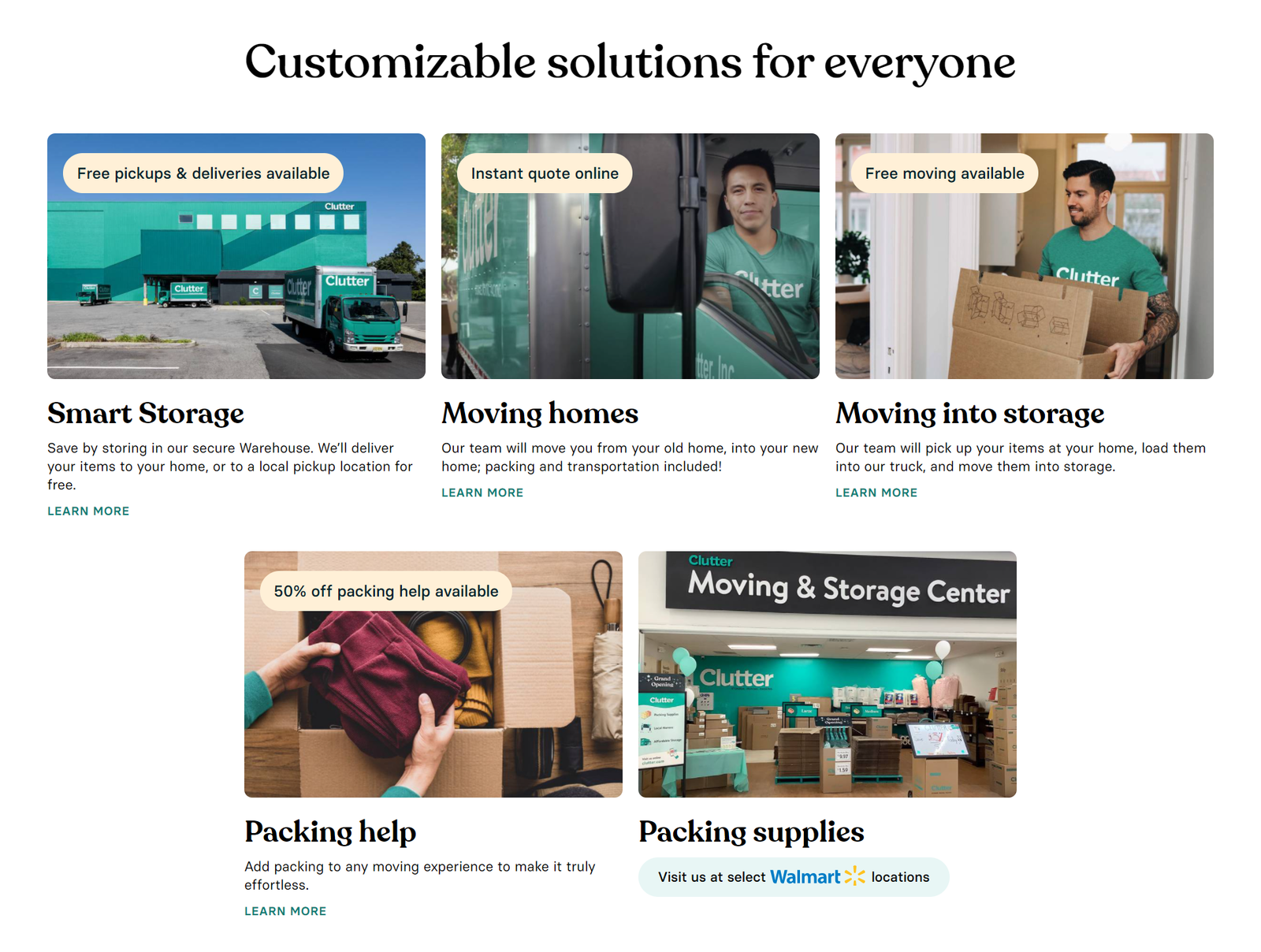 Clearly describe the different types of solutions you offer
Clearly describe the different types of solutions you offer
Of course, you need to talk about your personal brand or company too — your storytelling should revolve around the value you create. Describe your background and expertise in relation to how you help your clients solve their problems and live a better life.
Distance your brand from your competitors
What do you do differently? What makes your services special? Defining these aspects will help you stand out from the competition and win your audience’s attention. Vocalize your unique values — and your potential clients will know you are on the same wavelength.
This example from Trusted Health, a travel nursing agency, illustrates exactly that.
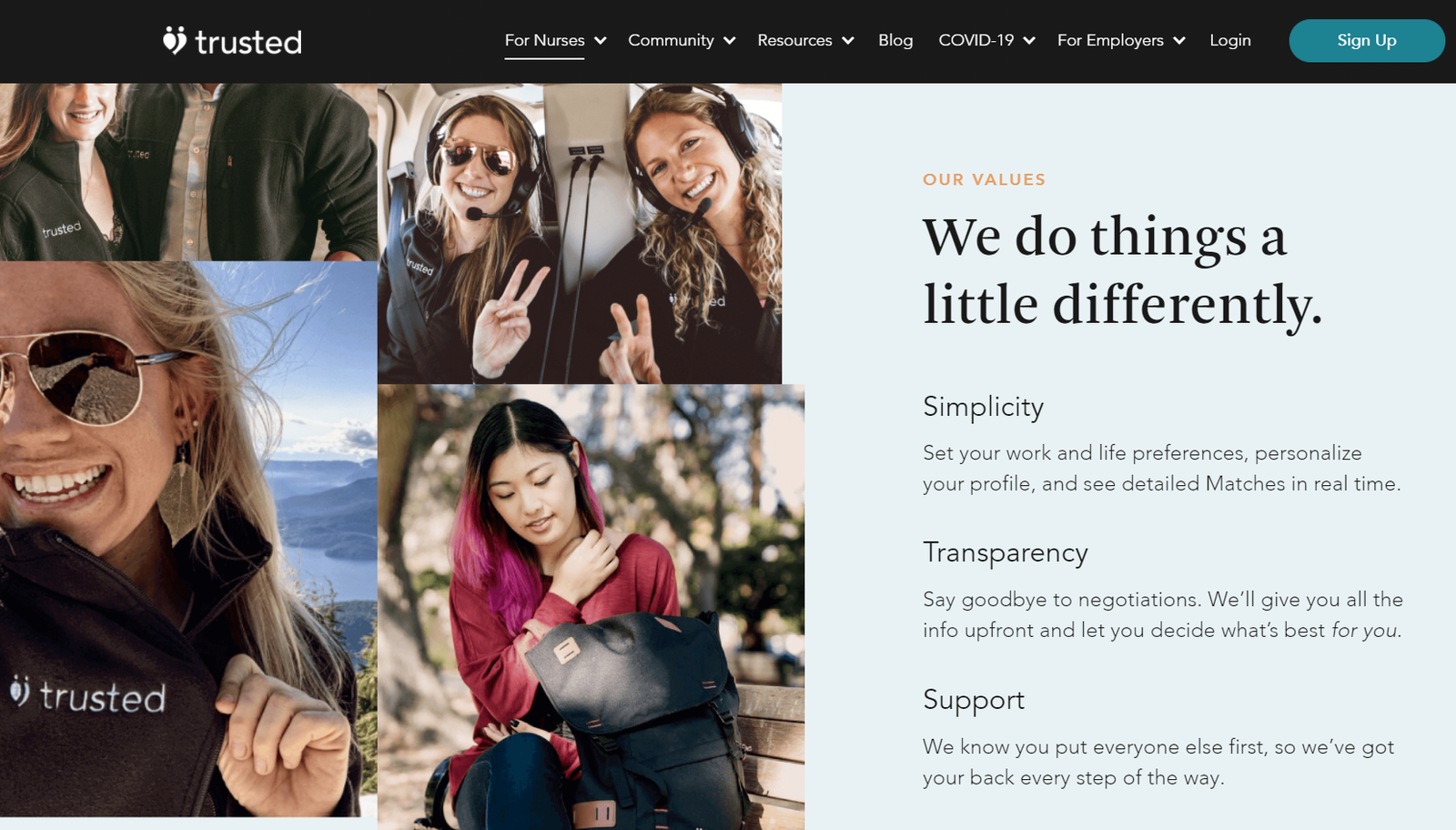 Define your values to make your services more unique
Define your values to make your services more unique
By distinguishing your services from the alternatives available on the market, you help your potential clients make the right decision. Also, you save them time because they won’t need to do in-depth research themselves.
You can distance your personal brand or company from your competitors by setting more affordable or premium pricing, offering a wider set of options, or choosing a drastically different tone of voice.
Describe the benefits of your service
Once again, it’s all about problem-solving and taking a customer-centric approach. Clarify the benefits your service brings and the needs you or your team can cover. People are searching for simple solutions, and you want to make yours as comprehensible as it gets.
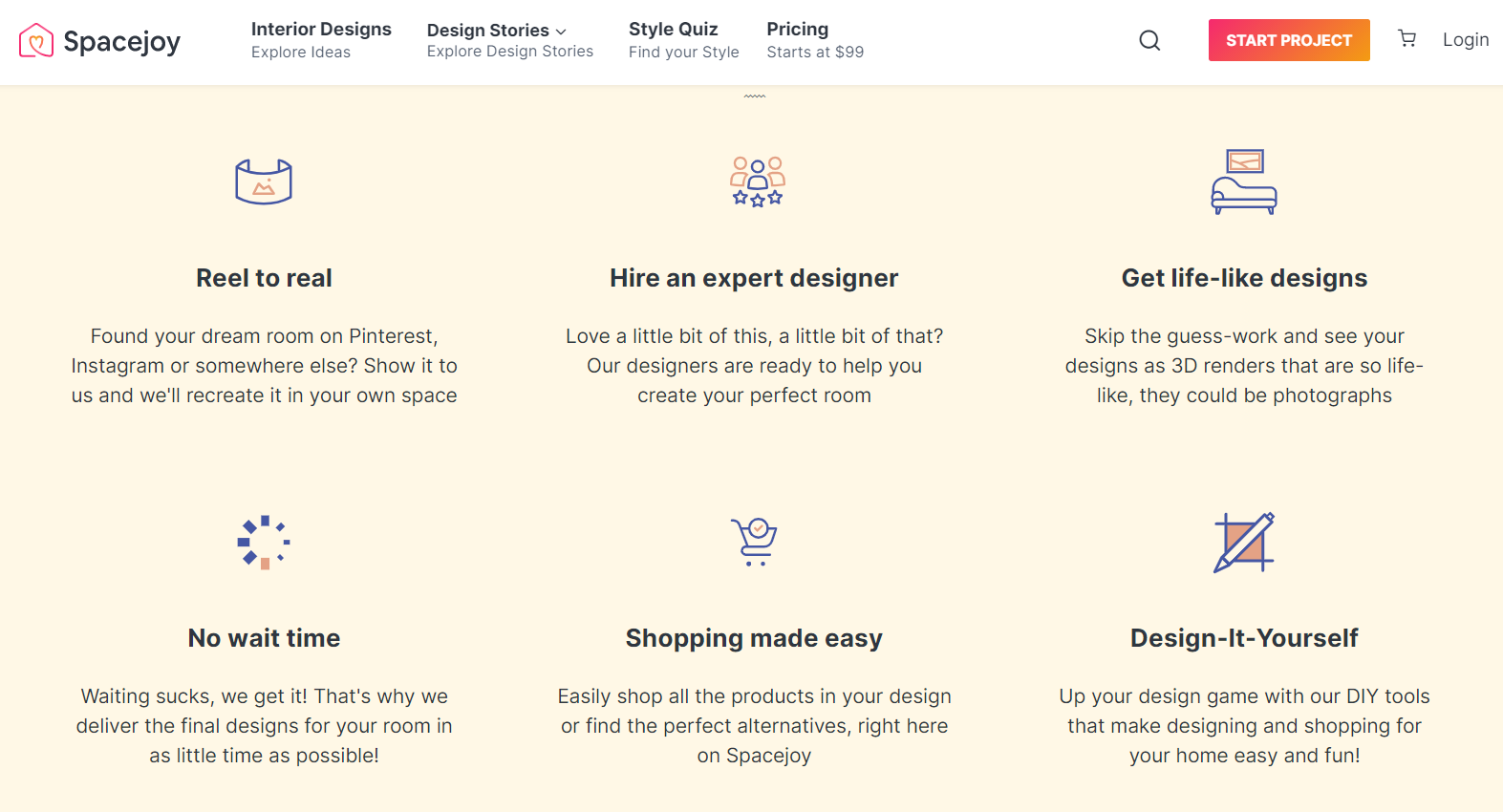 Listing the benefits of your service is one the most important parts
Listing the benefits of your service is one the most important parts
Focus on the client’s side of things, namely issues and risks they’re dealing with. You need to dissolve their fear of ordering someone’s services online. The best way to do it is to show that you recognize their fears and doubts — and are ready to help.
Introduce yourself and your team
Inject some emotion and personality into your brand story by introducing yourself to your potential customers and letting them know who stands behind your brand. It doesn’t need to be your full biography or the story of your company from day one — just write a little description explaining your background and what makes you a trustworthy professional.
 Describe who you are and what entitles you to offer professional services
Describe who you are and what entitles you to offer professional services
By introducing yourself or your team, you create an emotional connection between your company and your audience. They already know your names, your experience, and the way you look — it’s the equivalent of greeting them at the door.
Use the power of social proof
Let your work and client endorsements speak for themselves. It’s the most efficient way to demonstrate both the quality of your services, and your professionalism. But we all know too well that fake reviews are very common — that’s why it’s better to ask your existing clients to spread the word about you on social media to make their feedback more verifiable and trustworthy.
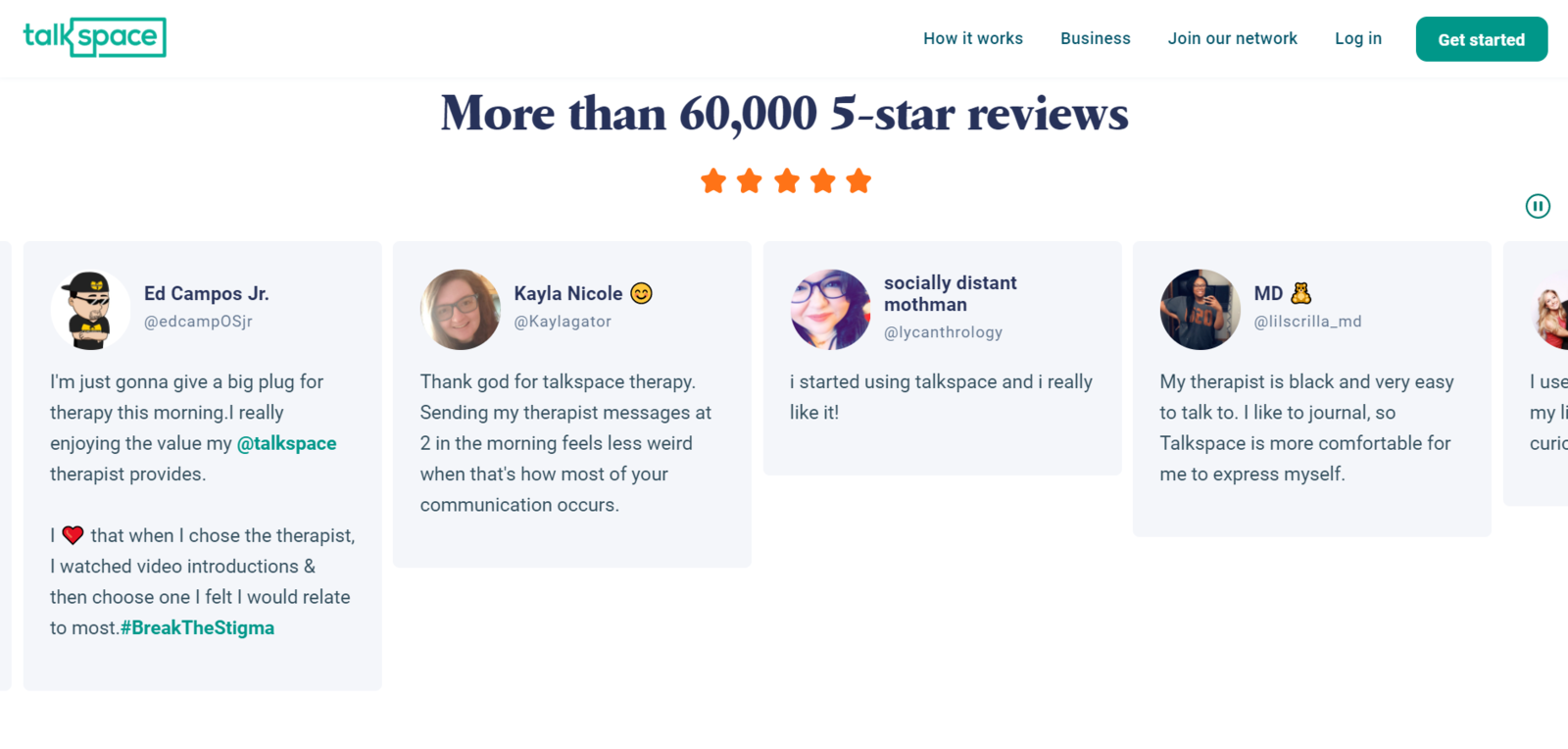 Testimonials work best when they’re real and verifiable
Testimonials work best when they’re real and verifiable
If you provide premium services, your clients may not want to share their personal impressions on Twitter or elsewhere on social platforms. In that case, you can just politely ask them to add their real names, photos, or job titles to their reviews on your website, if they’re comfortable.
Explain how it works
You need to think about how to sell your services to a new audience unfamiliar with your niche. Let’s take Talkspace as an example. It’s an online platform helping people from all over the world find their ideal therapist. Many people who visit the Talkspace website have no idea how it’s supposed to work, and they have never tried talking to a therapist online.
Knowing that, the team explains that using their service is way easier than it looks.
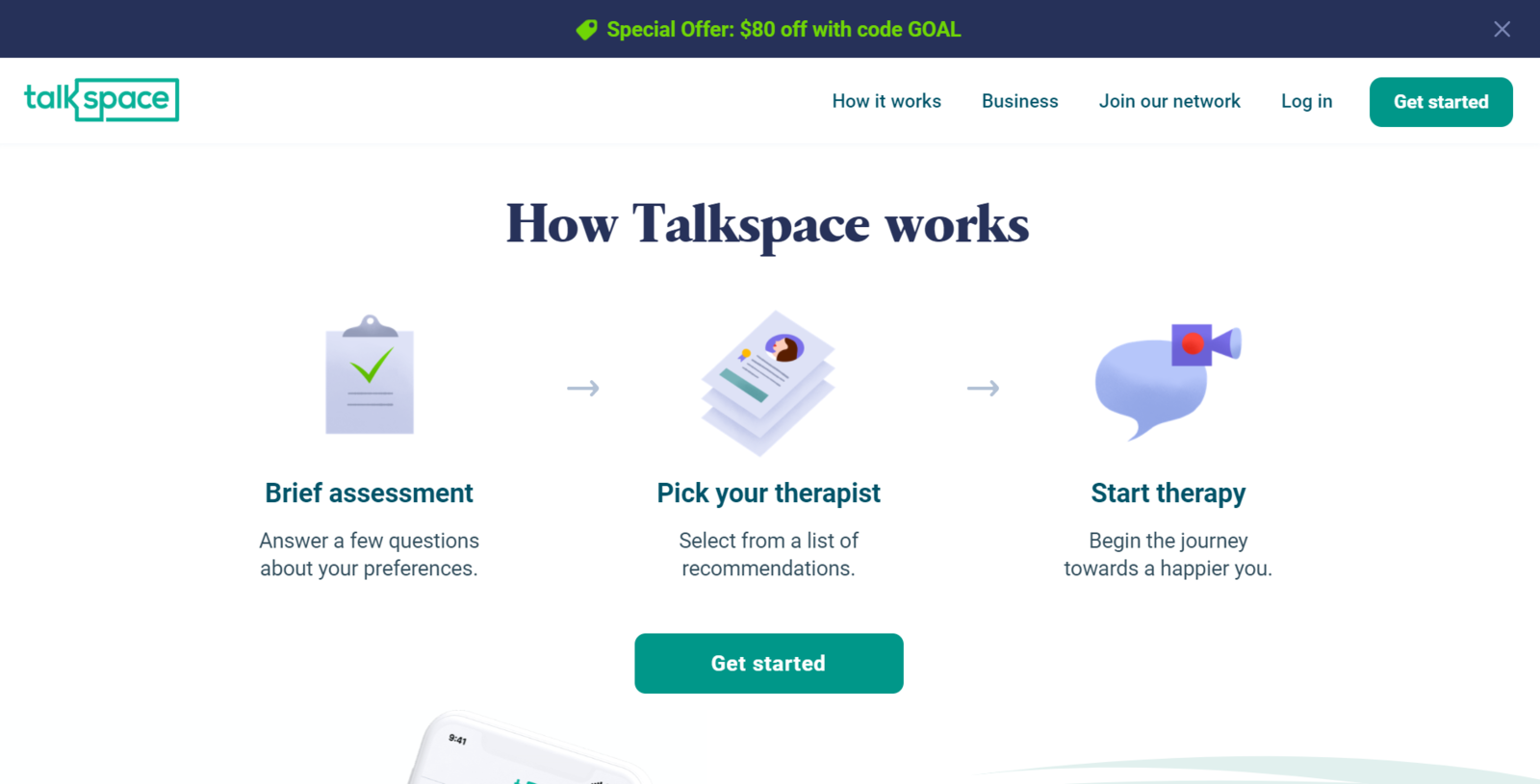 A step-by-step explanation will help your new audience understand what to expect
A step-by-step explanation will help your new audience understand what to expect
Don’t forget to illustrate every step of your explanation as well. Minimalistic icons will help your visitors digest the information quicker and visually navigate them through the text.
Offer different packages and custom pricing
There is no need to limit yourself — you can cater to different customer groups by offering a variety of choices. Create at least three packages suited for modest, average, and generous budgets. Customizable solutions will help your audience find the most suitable offer and be sure they are not paying extra for services that they don’t need.
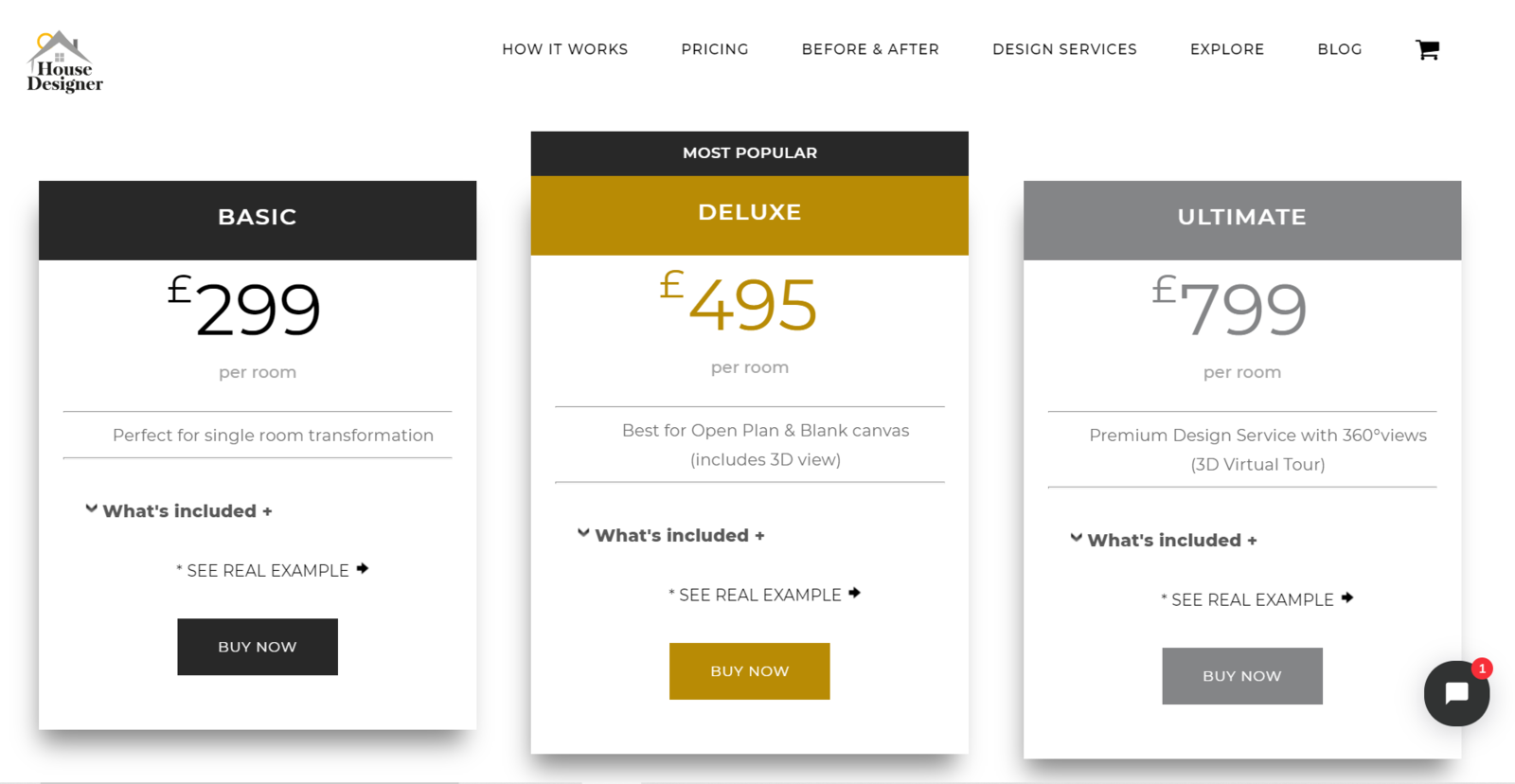 Customization is the key when it comes to shaping an offer
Customization is the key when it comes to shaping an offer
This example demonstrates another good practice — providing examples for each of your packages when possible. Let your future clients take a glance before they pay to help them gain certainty and make a decision.
Add personalization
You can take it one step further and allow your audience to create their own package including only the services they need. For instance, if you are an event planner, you can add a subscription form to your website so your users can specify their needs and requirements before contacting you. With that information on hand, you can tailor a unique concept for them.
Here is an example from HelloFresh, a food delivery service that offers easy-to-cook ingredients and recipes to make restaurant-quality meals at home. They added a calculator to their website to help their users precisely set their preferences before paying.
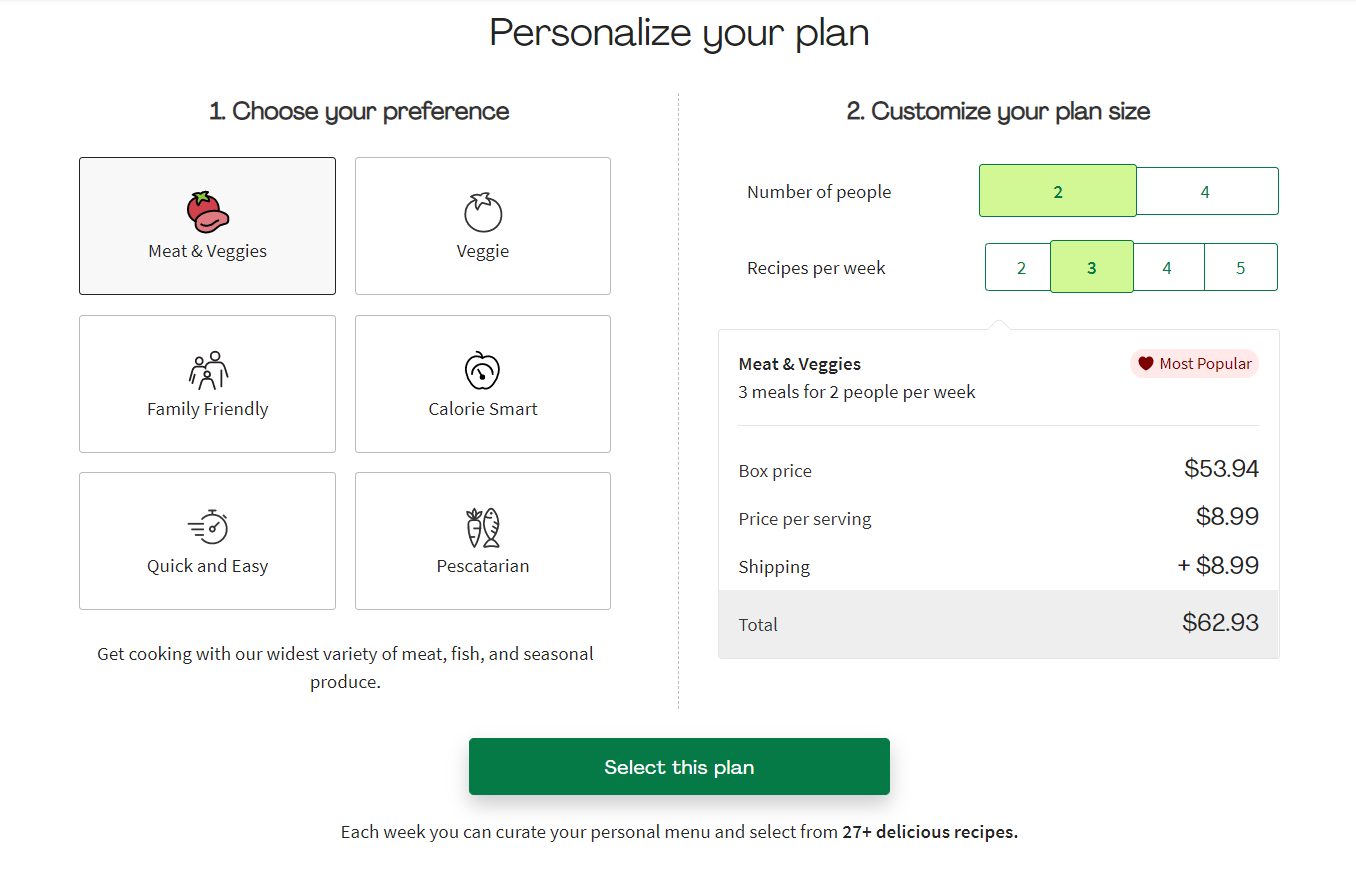 Personalized services will help you win more clients
Personalized services will help you win more clients
It’s important to have some level of personalization — it means that you pay attention to every client’s expectations and needs. Also, it frees up your time and energy because you can contact your leads while already knowing what they want.
Answer FAQs
If you already sell services online, you know that many clients ask the same questions. And there is no way to answer those questions on the main page of your website because they’ll eat up way too much space. The solution is simple — add an FAQ section to your website where you can answer repetitive questions in detail and use collapsible elements to hide big chunks of text.
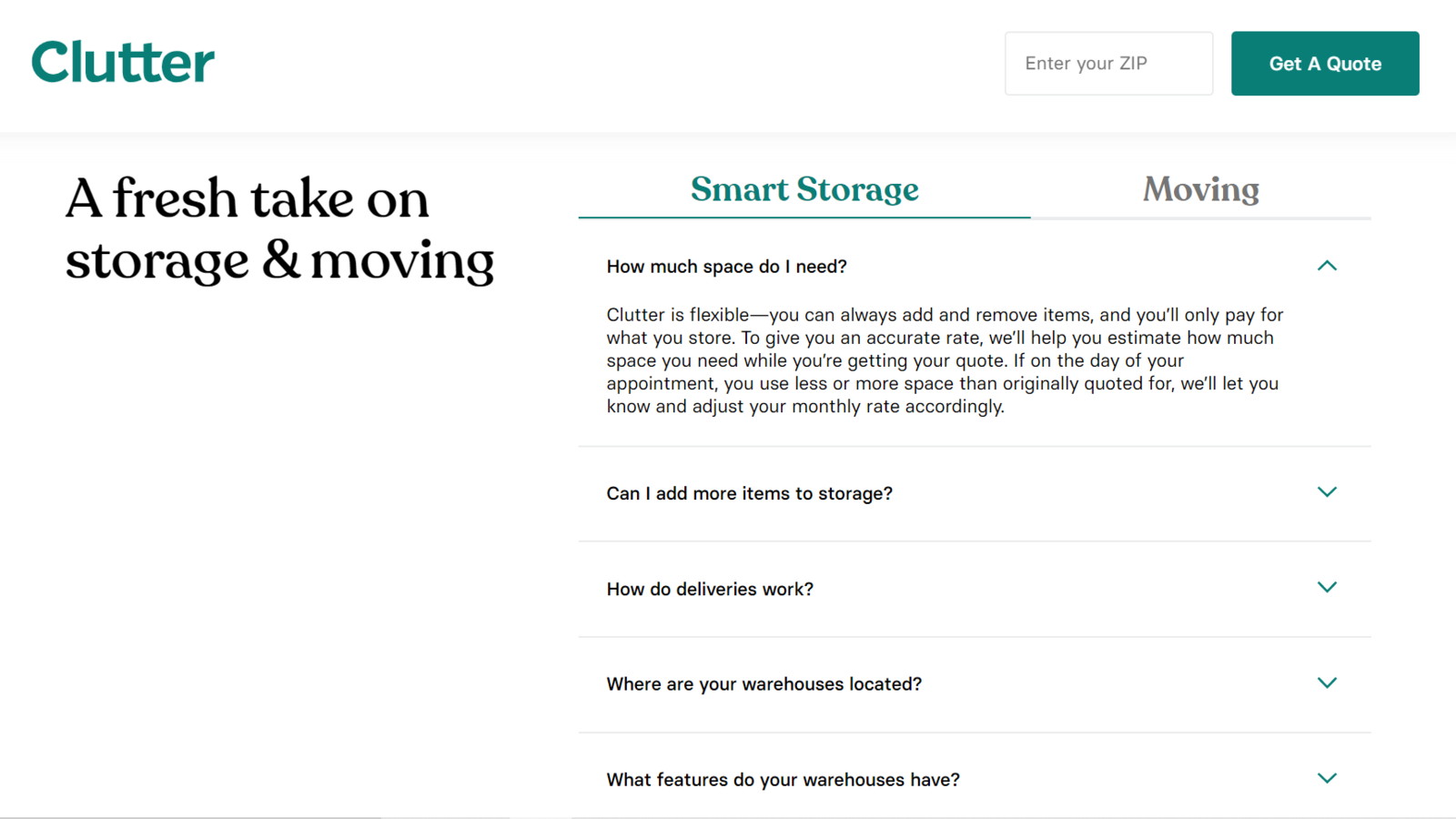 Add FAQs to help your users learn more about your services
Add FAQs to help your users learn more about your services
Having FAQs answered enables you to concentrate on more important tasks and communication. And your users will contact you already knowing how you can solve their problems.
Service marketing strategies
Supercharge your marketing and start selling services online through multiple channels to reach a wider audience. We’ll list the main service marketing strategies worth investing in.
Create a stunning website
Your website is your business card, portfolio, the main lead-capturing tool, and so much more. It can be a simple landing page or a multi-page resource — but your business absolutely needs one.
Don’t miss out on an opportunity to try our
landing page builder! It’s the fastest way to create an aesthetic landing page or bio link page.
On your website, you can incorporate all of the elements and best practices we’ve described earlier — from your customers’ reviews to a pricing calculator. Also, that’s where your new audience will land after clicking on your ads. Your website will help you share your expertise, capture your visitors’ interest, and convert them.
Here is an example containing everything a selling website needs:
Having a website enables you to showcase your work and attract new clients
Don’t forget to mention other ways to contact you on your website because some clients may prefer to have a more personal dialogue before they order your services. Also, linking to your social media profiles will help you get more subscribers and generate more leads.
Send friendly, useful emails
We will never get tired of talking about the importance of email marketing. It’s the best way to establish direct communication with your potential and existing clients without depending on unpredictable social platforms’ algorithms. If you want to minimize your expenses and maximize your outreach, it’s the way to go.
Emails will help you guide and educate your users, especially if you offer a sophisticated online service.
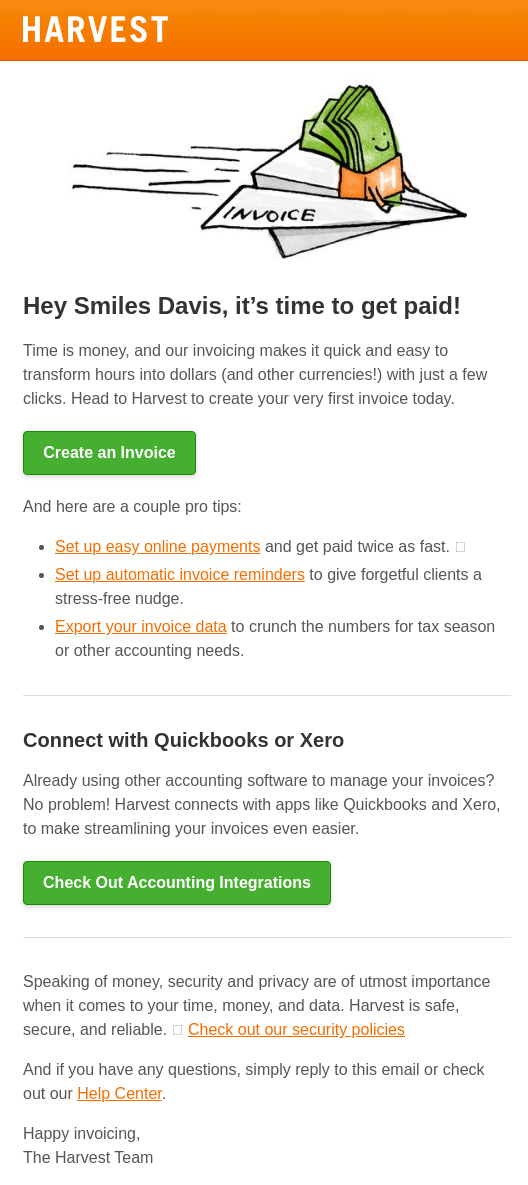 Use email marketing to sell your services online; source: Really Good Email
Use email marketing to sell your services online; source: Really Good Email
Using email automation platforms like SendPulse, you can send personalized, interactive emails at the right time, segment your audience, and manage multiple campaigns from one place. There is also a built-in spam checker helping you make sure your emails will be delivered successfully. You can explore these and other features even with a free account — give it a try!
Collaborate with influencers
Hands down, influencer marketing is one of the best ways to prove that your services are real and effective — it’s like getting a positive review but on a large scale. Of course, the influencers you work with need to have a real following base and interests close to your niche.
You can invite opinion leaders of your choice to try your services for free. In exchange, they will tell their audience how your services helped them solve their problems and legitimately made their life easier.
 Use influencer marketing to promote your services
Use influencer marketing to promote your services
The only challenge is to find niche influencers that really represent your target audience and have a similar mission. Otherwise, your partnership will come across as suspicious and not worthy of attention. You may also want to create a special offer for new clients to incentivize trying your services.
Instagram, Facebook, and Twitter are great for publishing snackable content and teasers that will pique your audience’s interest and remind them about your services. Your area of expertise defines the platforms you choose, but you need to have at least one social media channel to stay in contact with your audience.
 You can share your blog articles on Facebook to gain traffic
You can share your blog articles on Facebook to gain traffic
If, for instance, you offer high-end interior design, you may want to stick to Instagram and Houzz and stay away from TikTok and Snapchat. If, however, you sell beauty services, those highly visual and viral social media platforms will be your best choice. If you grow your personal brand and offer coaching or consulting, YouTube will help you solidify your expert status.
Start using paid ads
Creating useful content will only get you so far — you also need to promote it. Paid channels such as Google Ads or Facebook Ads will help you build a pool of clients, attract a new audience, and reach out to those who previously expressed interest in your services.
Paid ads aren’t for telling everyone about your company — they are for helping people find perfect solutions to their problems. You can use relatable you-language in your ads to signify that your audience can extract value from your offering right now. Like in this example promoting an educational service.
 In your paid ads, use active phrases encouraging viewers to try your service
In your paid ads, use active phrases encouraging viewers to try your service
Keep in mind that you need to create dedicated landing pages for each of your ad campaigns so that your website’s visitors won’t get lost.
Create your blog
Owning a personal brand blog or a company blog is crucial. Sometimes, it’s the only way for your target audience to find out that you are the expert they’ve been looking for. You can write client case studies, talk about industry events, debunk typical myths, or all of the above.
Curology, a company that creates personalized cosmetics to cure acne, has a variety of topics to tackle in their blog — from company news to the ingredients they are using.
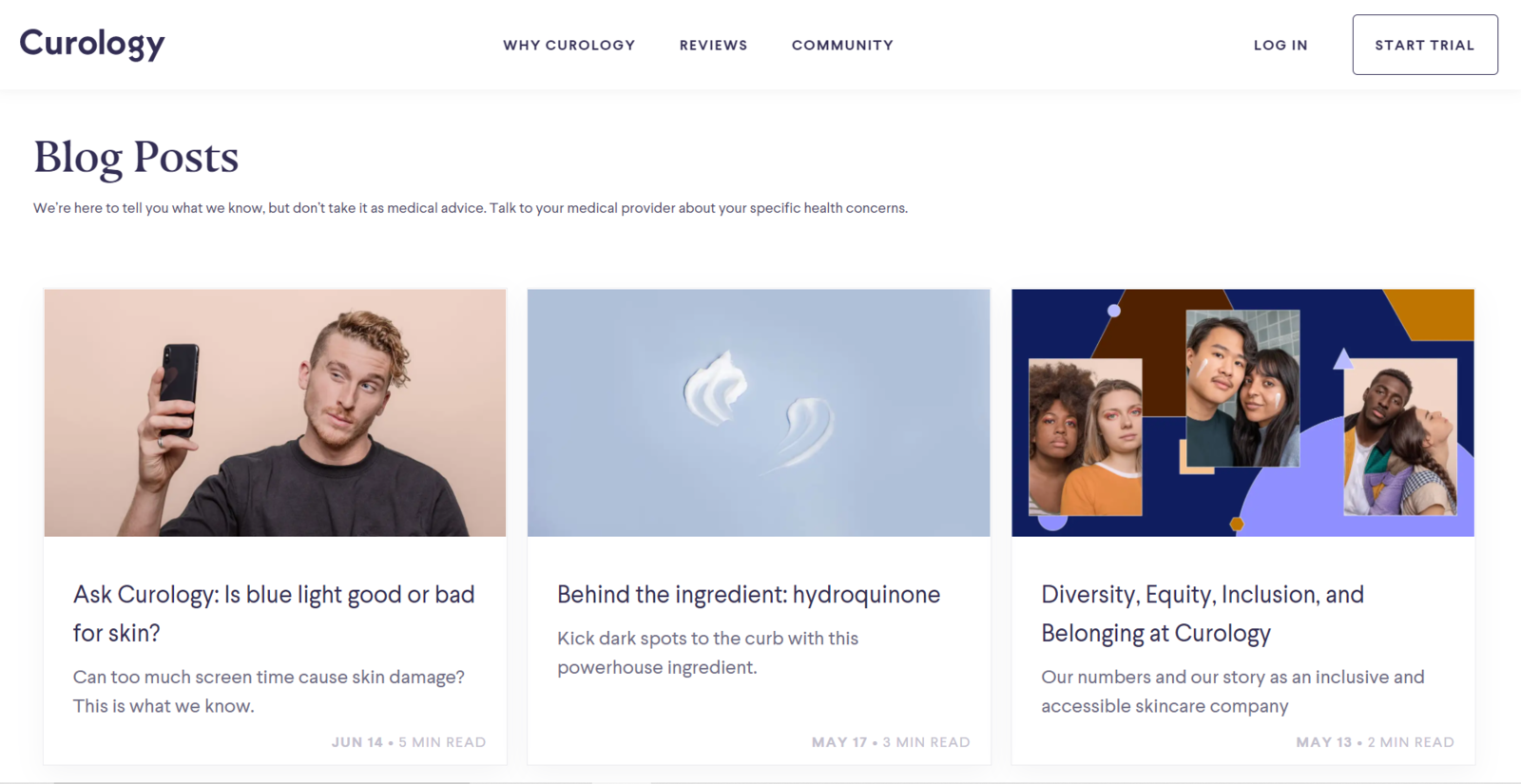 Your blog will help your share your expertise
Your blog will help your share your expertise
Investing time and effort in a blog always pays off. It boosts your website’s SEO performance, creates additional backlinks when other blogs quote you, and just de facto proves your expertise.
Share downloadable content
Another way to share your knowledge and establish initial contact is through branded downloadable assets that users can get in exchange for their email addresses. These are called lead magnets, and they are incredibly effective at keeping people engaged and connected.
You can deliver value using webinars, infographics, eBooks, or PDF brochures.
 Use gated format to share the most valuable content
Use gated format to share the most valuable content
This channel will bring you new subscriptions and help you steadily grow your mailing list. Also, it’ll be a warm audience because you’ll collect the email addresses of people who are genuinely interested in your services and ready to find out more.
Before you go
You’ve learned how to sell your services online — why not apply that knowledge now? Try all the SendPulse products and automate routine tasks while concentrating on your business. Send automated email flows, keep track of your sales with our CRM solution, and create a chatbot to stay available for your clients 24/7. It’s hassle-free and code-free — try it and see for yourself!